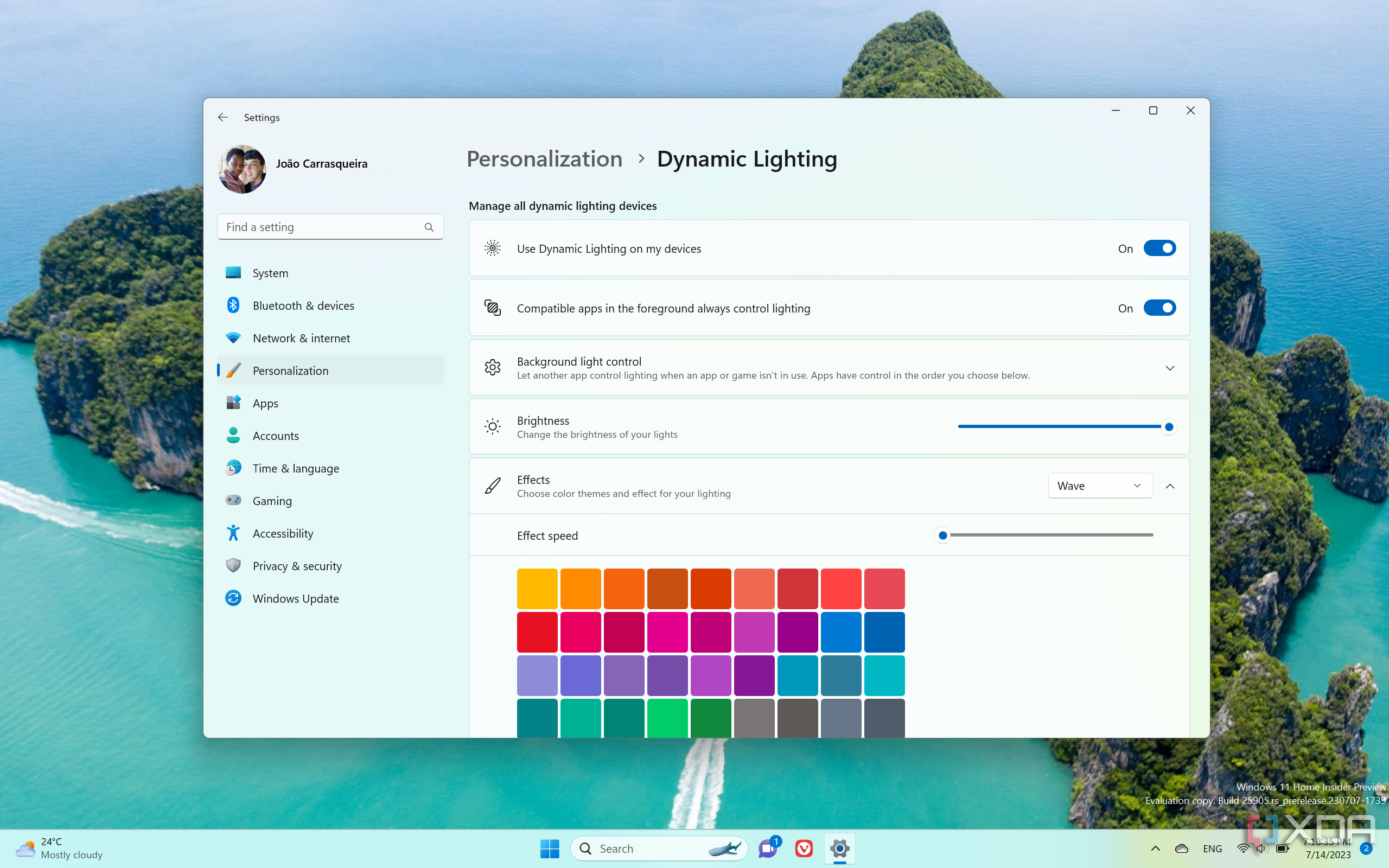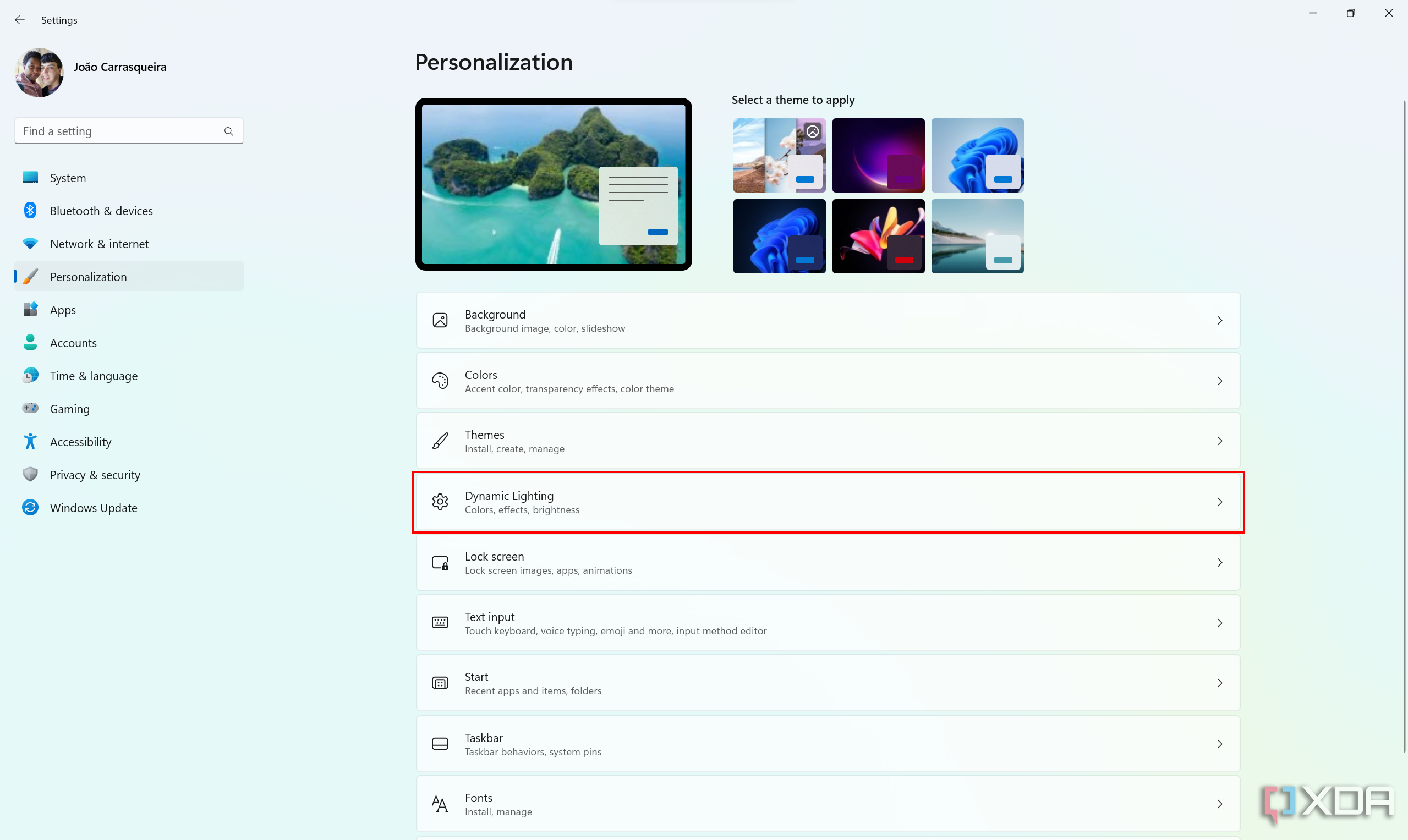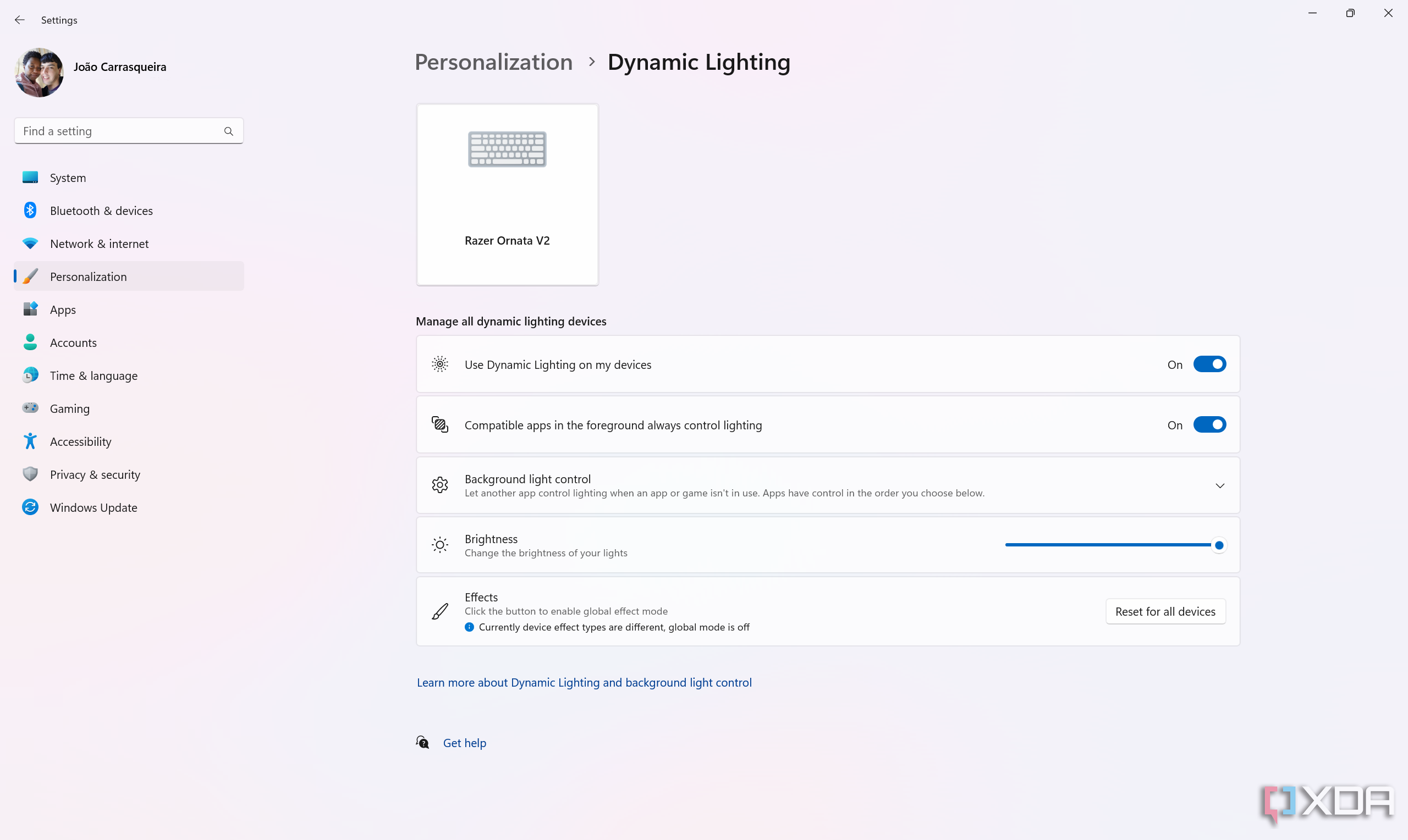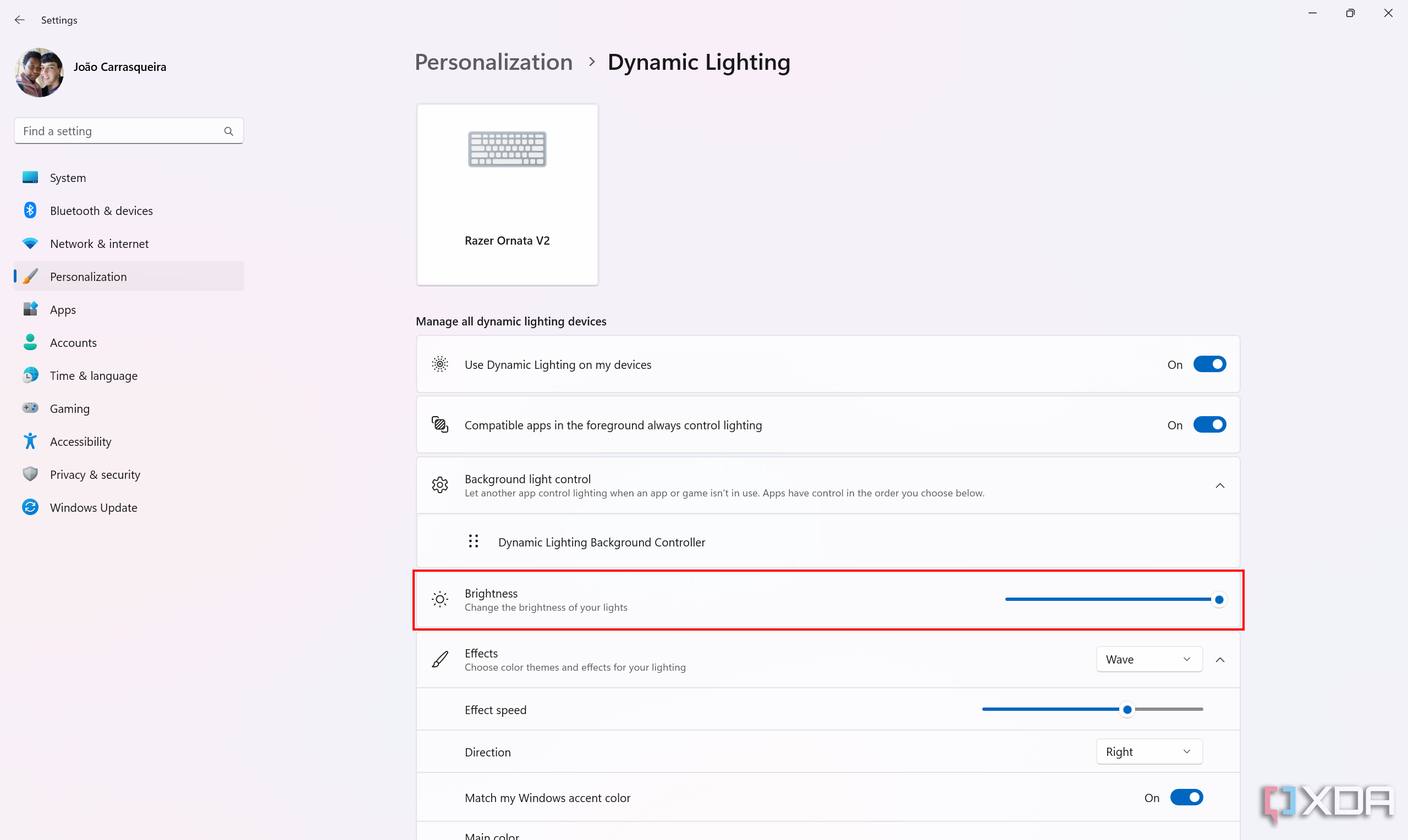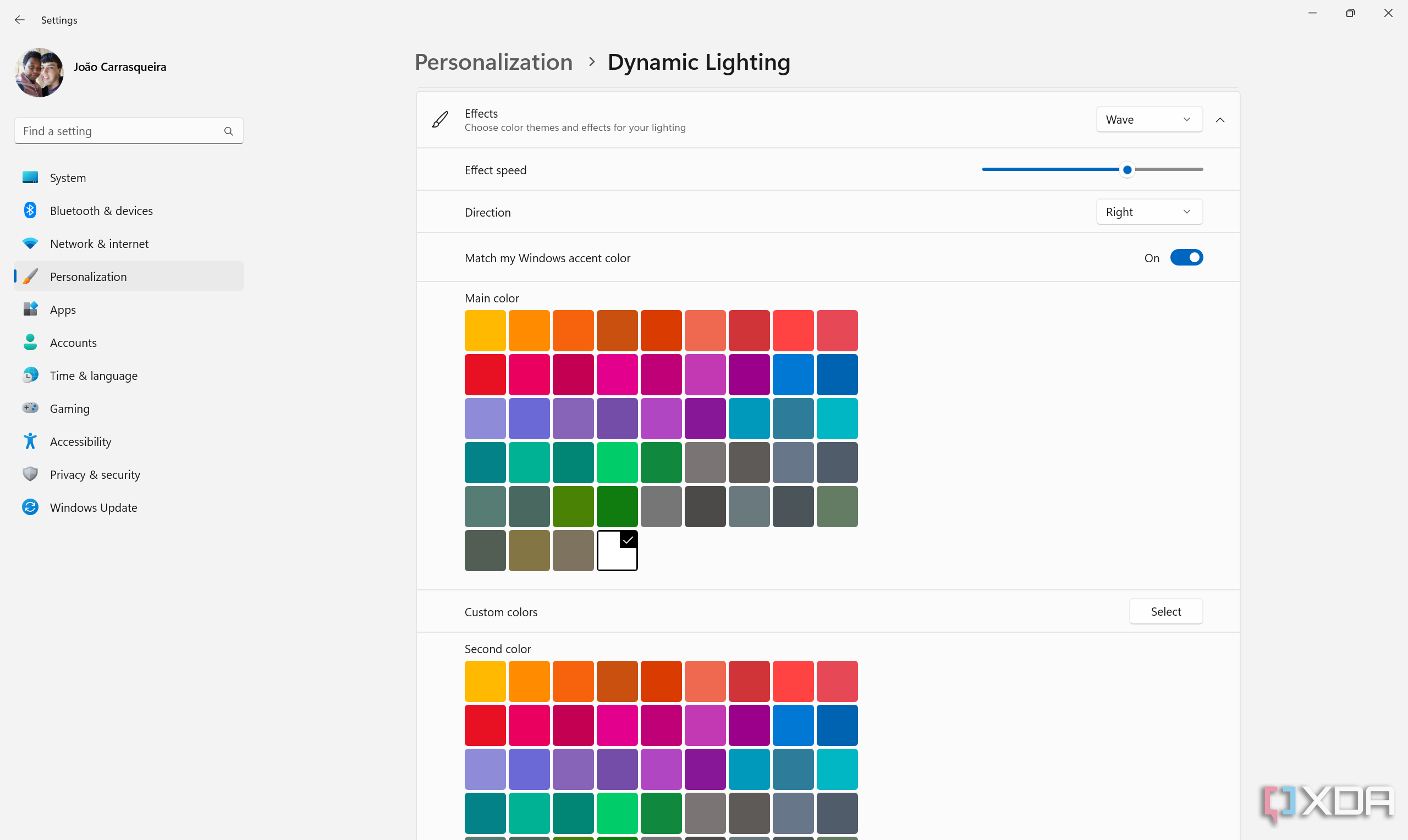For the longest time, the only way to change the RGB lighting effects for the peripherals on your Windows 11 PC has been to use the dedicated software from the brand that makes those peripherals. Each of the companies making some of the best gaming keyboards — whether that's Razer, SteelSeries, Corsair, and so on — has its own app, and if you end up buying equipment from different companies, it means you'll also need multiple pieces of software bloating up your device. Thankfully, Windows 11 is finally introducing Dynamic Lighting, a feature that brings together RGB lighting controls to a native Windows 11 interface, so you no longer need all of these apps.
Currently, Dynamic Lighting is only available for Windows Insiders, though we expect this to become fully available when Windows 11 version 23H2 rolls out, likely within the next few weeks. The current implementation isn't as intricate as what you can do with dedicated apps, but if you want simple RGB lighting controls, all you need is the Settings app built into Windows 11.
Configure RGB lighting with the Windows 11 Settings app
If you have a compatible version of Windows 11 (such as the latest Windows Insider builds), you can set up Dynamic Lighting fairly easily
- Plug in your compatible RGB peripheral (see the list below) using the USB ports on your computer.
- Open the Settings app.
- Click Personalization from the side menu.
- Choose Dynamic lighting.
- Here, you can change global RGB lighting settings for all your compatible devices. Make sure Use Dynamic Lighting on my devices is enabled. Alternatively, choose a device at the top to configure it individually.
Individual devices may already have preset settings. To use global settings, click Reset for all devices at the bottom of the Dynamic Lighting page.
- You can use the Compatible apps in the foreground always control lighting to choose whether other apps should be able to override the lighting controls set by Dynamic lighting.
You can also choose the order in which different background lighting controllers have priority over each other with the Background light control option. This is useful if you do want to install dedicated software for more advanced controls.
- Use the Brightness slider to adjust how bright the RGB lighting should be.
- The Effects option lets you choose from six effects:
- Solid color - Displays the selected color constantly
- Breathing - Turns the lighting on and off in a single color
- Rainbow - Cycles through the color spectrum.
- Wave - Creates a wave effect with two selected colors.
- Wheel - Displays two selected colors in a spiral animation.
- Gradient - Displays two static colors chosen by the user.
- You can choose the colors and effect speed (for animated effects) by expanding the Effects area to show the color selector and Effects slider. To use a custom color, you may need to disable the Match my Windows accent color option.
- You can also choose a completely custom color by clicking Select next to Custom colors. This lets you use RGB or HSV values to choose the exact color you want.
The individual settings pages for each device look pretty much identical, they will simply apply to just one device instead of all of them. You can do it this way if you want a completely different look for each device in your setup. All your changes are applied in real-time and saved automatically, so you can close the app when things look good to you.
What devices support Dynamic Lighting?
Currently, the list of devices supported by Dynamic Lighting is fairly short, and almost completely exclusive to Razer devices, but Microsoft says companies like Acer, Asus, HP, HyperX, Logitech, and Twinkly are also on board. Eventually, the list should grow, but for now, you can use Dynamic Lighting with the following keyboards and mice:
Additionally, support for the Asus ROG Harpe Ace AimLab Edition Gaming Mouse and Asus ROG Scope II Wireless 96 Gaming Keyboard is planned to be coming soon, though Microsoft has been saying this for a while, so "soon" is a somewhat subjective term.
It's worth noting that not all devices will support the full breadth of RGB lighting features. For example, the Microsoft Pro Intellimouse doesn't support effects with gradients, since it can only display one color at a time.
More advanced options require special software
As cool as it is that Microsoft is enabling some form of RGB lighting that can be synchronized across devices without special software, this implementation is undoubtedly limited. If you want the most options possible, you're going to need special apps, many of which may be automatically installed when you plug in your peripherals. A few of the more popular apps are:
- Razer Synapse
- SteelSeries GG
- Alienware Command Center
- HyperX Ngenuity
- Omen Gaming Hub
- Corsair iCue
- MSI Mystic Light
- Armoury Crate (Asus)
- Open RGB (universal software for multiple brands)
If you have products from other brands, you'll have to look into what app you need to use RGB lighting with your peripherals. Hopefully, as time goes on, Dynamic Lighting on Windows 11 will become more robust and this won't be as necessary anymore, but there will always be some limitations, as companies are also encouraged to promote their own apps. We'll have to see how things evolve from here, but it's great to see this first step.

